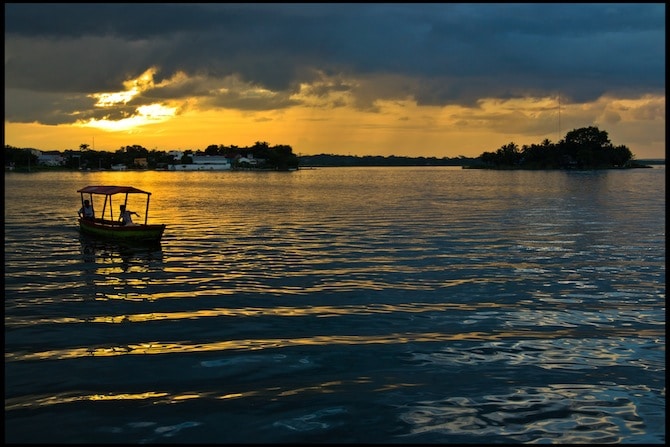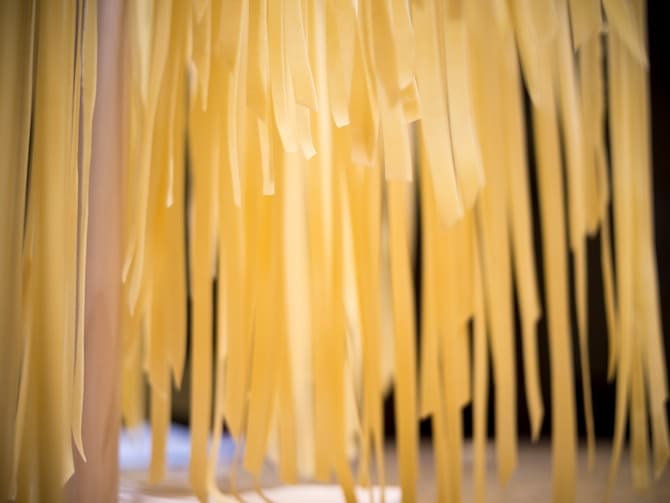
Tikal. Photo courtesy of mtsrs.
On a recent trip to Guatemala, I met a woman who left her urban life as a fitness guru in Guatemala City to tease out the secret ingredients of the jungle in order to nourish guests in a forest retreat. She went on a weekend holiday, fell in love with her surroundings, and crafted a new life running an eco-lodge where she feeds world travelers exotic food, and provides them with a haven of tranquility.
The Pull Of Petén
Lorena Castillo runs Ni’tun, an eco-lodge perched above the shores of Lago Petén Itza in Guatemala’s northern Department of Petén. In 1992, Castillo’s boyfriend planned a romantic weekend getaway visit to the area. Her beau was working in tourism at the time, while Lorena was multitasking as a fitness instructor, working in a law office, and administrating the family coffee farm. That was soon to change, as Lorena arrived in Petén and never left. Instead of spending a long weekend in the area, Castillo and her boyfriend ended up camping for three weeks. She couldn’t shake the feeling that she had to live in Petén — that something was pulling her to stay. She was head-over-heels in love with the area — the surrounding jungle teeming with life, a feeling of connection with the bathwater-warm lake, and the incredible, untouched Mayan sites.

Howler monkey. Photo courtesy of angela n.
Castillo had the uncomfortable job of calling her family and boss to let them know that she wouldn’t be returning to Guatemala City from her “long weekend.” Back in 1992, this meant finding a community phone booth, giving the phone number to a clerk and waiting until the call was connected. She was then summoned to step into a small plywood booth with a phone where she delivered her news. No one was pleased, she recalls, but she was determined to follow her instincts.
Castillo immediately started talking with different municipalities looking for land to lease. Despite her lack of faith that she would find a piece of property, the local mayor instructed the secretary of the municipality to show Castillo the last piece of land available. The mayor ultimately granted her the lease with the caveat that the construction of a lodge had to begin within three months. Although the birth of the lodge began with a land lease, Castillo wanted to purchase it, preserve all that was special about it, and share its special magic with travelers. She rented a house in Santa Elena and then began construction on the lodge, which was later discovered to be located on a post-classical period Mayan site. The name Ni ́tun already existed in the old maps of the area, and because there was also a Mayan site called Ni ́tun located in a nearby peninsula, the lodge was christened.

Lago Peten Itza. Photo courtesy of Guillen Perez.
The Lodge
Twenty-two years later, Ni ́tun looks as though it is part of the jungle. Arriving there and meeting Castillo is like suddenly finding a familiar friend. She gives off a welcoming, no-pressure vibe. The atmosphere she has cultivated at Ni ́tun reflects this and envelops travelers during their stay. It’s no wonder she came and never left – the moment I arrived, I think my heart rate literally slowed down. It’s an easy place to just be.
It may be easy to relax at Ni ́tun, but given Castillo’s excellent cooking skills and the delicious ingredients available in the region, it can’t hurt to move a bit during a visit. A side trip to view nearby Maya ruins not only allows travelers to burn a few calories while following ancient footsteps to summit a pyramid, but also to take in the amazing flora and fauna found in the jungle. It’s easy to imagine the first explorers running screaming from the forest upon hearing the creepy calls of howler monkeys, or when they stumbled upon a jaguar for the first time.

Ni ́tun Lodge. Photo courtesy of Lyndsay Harshman.
Other diversions include tree canopy tours, horseback riding in a local reserve, swimming in the lake, and hikes through the jungle. All are worthwhile, but the true magic of the place is the ability to disconnect from the hustle and bustle of daily life.
Lorena treasures cooking with local ingredients, many of which can be found on the grounds of Ni ́tun. The Tziquinché mushroom is endemic to the region and grows in the bark of the Jiote or Chacaj tree (known as the “tourist tree”, because it is red and peeling all the time). It is a delicacy found only in Belize, Yucatan and Petén. The mushroom is rare, and only makes its seasonal appearance with the first rains in June. It is a very dry and meaty, though it looks and feels more like a very dark brown flower. The flavor is smoky and spicy, and Castillo knows just how to harness its best qualities in her cooking.

Fettucini. Photo courtesy of Robert S. Donovan.
Tziquinché Pasta With Garlic & Chiles
The first recipe that she ever created with Tziquinché was a pasta dish with garlic, chile and cream. I’d suggest you picture yourself barefoot, sitting at Ni ́tun’s rough-hewn table with a glass of wine, enjoying conversation and listening to the music of the jungle as you eat this fantastic dish. Loreana is a casual cook who is not big on measuring ingredients, but she kindly shared the following approximation of her recipe. It’s delicious. I only wish we had Tziquinché here in the United States.
After collecting* or buying the mushrooms, clean them from the thick parts that were attached to the Chacaj tree. Put some pasta, ideally fettuccini, to cook in a pot with water and salt. In the meantime, toss some crushed garlic in a clay pan or pot with olive oil over medium heat. (It is better to use ceramic or clay and not metal for this recipe). Add the Tziquinché and cook well, mixing constantly with a wooden spatula. Once it is nearly cooked through, add salt and pepper and a good quantity of whole cream. Mix well and cook for several minutes more until the cream and the mushrooms look a bit brownish.
Add fresh habanero chile to taste – with or without seeds, depending on how hot you like it. Add a bit of paprika for color. Finally add a small amount of chopped fresh parsley. Mix the pasta with the sauce and serve hot.

Lorena cooking up a delicious meal. Photo courtesy of Lyndsay Harshman.
Castillo is adamant that no cheese be added, as it dilutes the beauty of the mushrooms.
You may substitute the Tziquinché with a mix of dried shiitakes and cremini or portobello mushrooms to give it a meaty flavor similar to the Tziquinché. For meat lovers, I would add a bit of excellent quality ground meat (a mixture of beef and pork).
*Only forage for mushrooms if you have extensive experience in identifying them. Many mushrooms are poisonous. It is safer to purchase your mushrooms from a reputable grower or grocer than collecting them yourself.
If you want to try the real deal, you’ll need to visit Ni ́tun. It’s an easy one-hour flight from Guatemala City to Petén, then a quick transfer to the village of Flores for a short and relaxing trip across the lake to the lodge. You’ll discover the magic that brought Lorena to this special place, and she’ll be sure to keep you well-fed using the secret bounty of the Guatemalan jungle.
Contributed by author Gretchen Healey gave up a window office in the IT industry to embrace travel as a profession.

Jessica Festa is the editor of the travel sites Jessie on a Journey (http://jessieonajourney.com) and Epicure & Culture (http://epicureandculture.com). Along with blogging at We Blog The World, her byline has appeared in publications like Huffington Post, Gadling, Fodor’s, Travel + Escape, Matador, Viator, The Culture-Ist and many others. After getting her BA/MA in Communication from the State University of New York at Albany, she realized she wasn’t really to stop backpacking and made travel her full time job. Some of her most memorable experiences include studying abroad in Sydney, teaching English in Thailand, doing orphanage work in Ghana, hiking her way through South America and traveling solo through Europe. She has a passion for backpacking, adventure, hiking, wine and getting off the beaten path.








